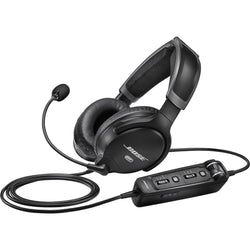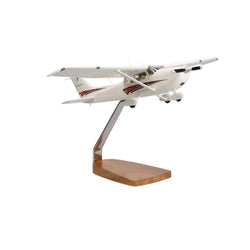What is the FAA WINGS program?
Pilot safety, currency, and competency amongst General Aviation pilots is an area of concern for the FAA. The WINGS – Pilot Proficiency Program is a targeted continuing education program which was created to “address the primary accident causal factors that continue to plague the general aviation community.”
The intent of the program is to reduce the number of accidents each year by providing relevant training that helps pilots apply “the principles of risk assessment and risk management.”
The training is focused on mitigating accident factors related to “common pilot errors, lack of proficiency, and faulty knowledge.”
How do you get FAA WINGS?
Participation in WINGS is voluntary, and the program is open to general aviation pilots who hold an FAA-issued pilot certificate (including a student pilot certificate) as well as a current medical certificate.
To get started, register and create an account on the FAA Safety website. You will be asked to verify your FAA license and medical certificate information. You will also create a pilot profile for the type of training you want to enroll in.
Training categories include single-engine land, multi-engine land, single seaplane, helicopter, balloon, glider, and other.
How does the FAA WINGS program work?
The WINGS program, as described in the WINGS Pilot Proficiency Program User’s Guide, incorporates an integrated web-based and hands-on approach. Earned credits are applied to and may satisfy the requirements of your next mandatory flight review.
Once your WINGS account is active, you will be able to view the training materials. Training materials include web-based knowledge activities courses and assigned flight activities in which you are to perform in an aircraft with a registered flight instructor. Each WINGS phase includes 3 knowledge activities and 3 flight activities.
Knowledge activities will be automatically selected for you based on the training category you choose, although you may also search the database for alternate courses that are of more personal interest to you. Simply self-enroll and complete the course at your own pace.
Flight activities will also be prepopulated and displayed in your My WINGS training page. As with the knowledge activities, they will be based on your selected training category, and you can select alternate activities if desired.
Each flight activity is listed on your training page with a link to the corresponding accredited activity information sheet. This sheet provides a background on the training the activity entails along with a flight activity worksheet to use while preparing for the activity.
The information sheet clearly states the objective of the flight activity, the sequence of events to carry out, and the standards the pilot must meet to receive credit.
Complete both the knowledge and flight activities training requirements, have your registered flight instructor sign off, and submit your completed credits for validation through the WINGS digital portal. Once validated, your earned credits will be good for one year.
Complete all the activities in your current phase, and you will be eligible to advance to the next phase. You will also receive a printable certificate documenting your training completion.
How many phases are in the FAA WINGS program?
Training material in the WINGS program is broken down into both levels and phases. There are three levels: Basic WINGS, Advanced WINGS, and Master WINGS.
The curriculum for the basic level is based on private pilot practical test standards. The advanced level corresponds to commercial pilot standards, and the master level is based on a commercial pilot with instrument rating, flight instructor, and airline transport pilot standards.
Within each level, a pilot may earn an unlimited number of phases. Although pilots holding a more advanced certificate will move on to the advanced or master levels, every pilot is required to complete Phase 1 of the Basic level.
The Basic level curriculum focuses strongly on primary accident causal factors, and it provides a foundation for the higher levels. Since the basics are so important, all WINGS pilots must complete a Basic level phase at least once every twelve months.
When a pilot completes a level of the WINGS program, he or she can request a complimentary WINGS lapel pin to commemorate the achievement and commitment to pilot safety, education, and competency.
Looking for other ways to keep up on flight skills? Check out our Rusty Pilot Recommendations.
Everything Explained for the Professional Pilot is a great book for pilots of all skill levels that we highly recommend.
 Want to know the advantages and limitations for BasicMed?
Want to know the advantages and limitations for BasicMed?
Wondering if you can fly under BasicMed? Find out by reading: BasicMed Explained (Guide to Understand the Essentials)








